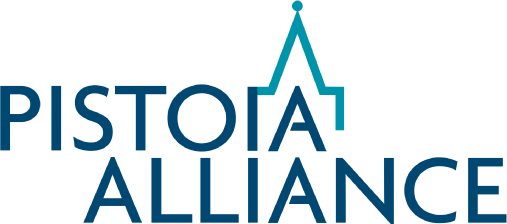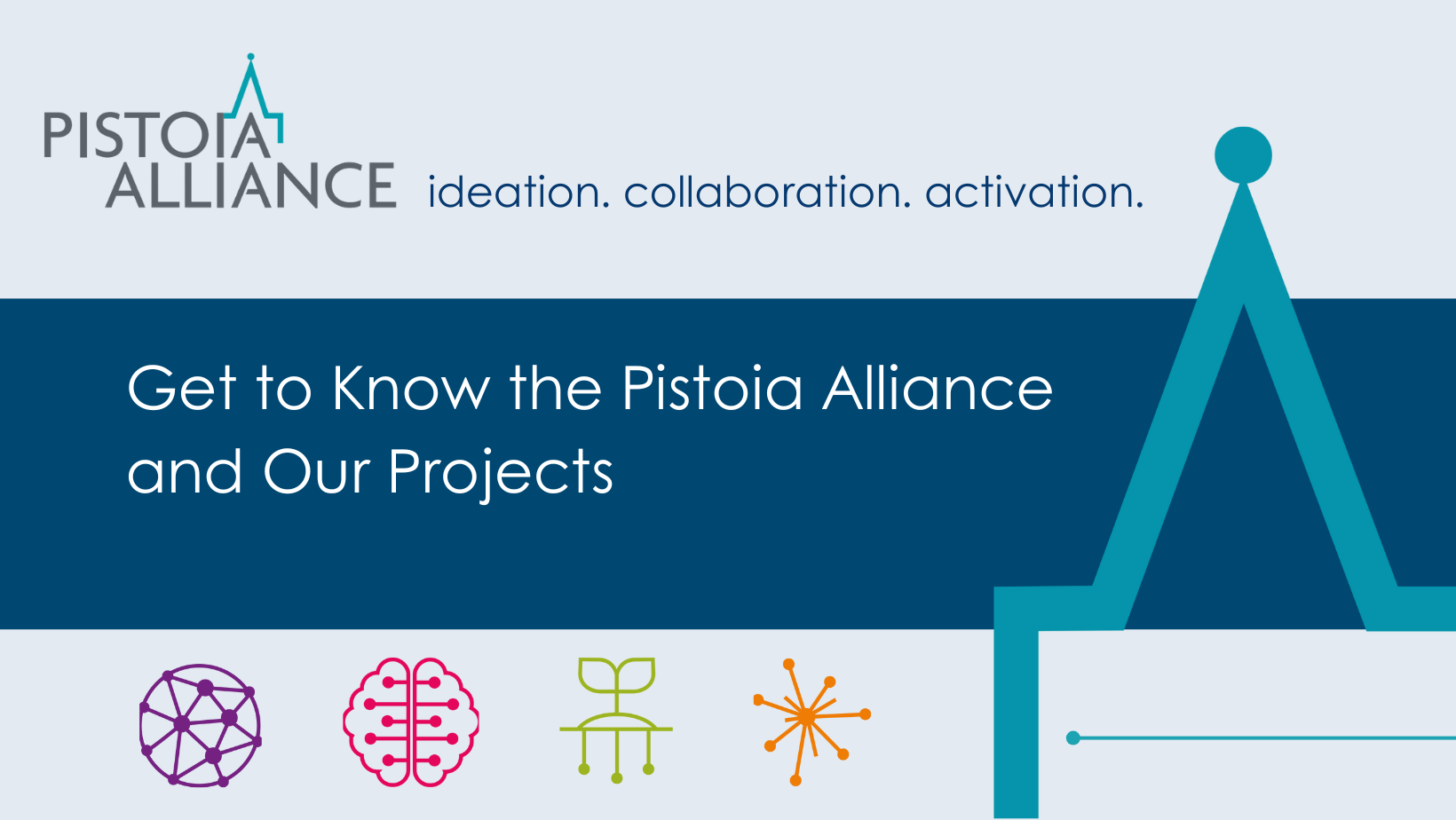The Pistoia Alliance and Open Pharma Research conducted an online survey of 200 participants from the global R&D community across Europe, the Americas and APAC, between May-August 2024. Respondents were from start-ups, pharma, biotech, software and service companies, academia and not-for-profit organizations; including R&D directors, lab managers, digital innovation, informatics and lab automation experts.
Resource Tag: Core Projects
Get to Know the Pistoia Alliance and Our Projects
The Pistoia Alliance is a global, not-for-profit members’ organization working to lower barriers to innovation in life science and healthcare R&D.
Founded over a decade ago the alliance brings together more than 200 member companies from life science companies, technology and service providers, publishers, and academic groups to transform R&D through pre-competitive collaboration.
Pistoia Alliance Annual Report 2023/24
Digital Accessibility Guide
The Digital Accessibility Starter Guide is a succinct one-page compilation of digital accessibility heuristics designed to guide interface reviews. While it is not comprehensive documentation, nor is it a substitute for a thorough audit, it can facilitate the early and consistent integration of digital accessibility considerations into the product and project roadmaps.
UXLS Resource Operations Framework
An operational framework to support life sciences organizations in scaling up their user research.
Improving the Efficiency and Effectiveness of R&D: Lab of the Future
The Pistoia Alliance is pleased to announce a new webinar series as part of our overall theme of Improving the Efficiency and Effectiveness of R&D. Each webinar will explore the power of collaboration to solve shared challenges, drive transformation and reduce barriers to innovation in R&D.
The Lab is the center of innovation but the role and nature of the Lab has changed. These changes are being driven by advances in life science research, technology, and latterly, COVID-19.
- What are the latest developments in the workspace, facilities planning, and technology?
- What new innovations including collaborative digitalization can we expect to see in the Lab of Future?
Learn from industry experts and thought leaders as they share the latest trends and best practices in life sciences R&D and discuss how we can collaborate to innovate.
Helping Scientists Stay Safe Through the Chemical Safety Library
This webinar co-hosted by The Pistoia Alliance and CAS will engage a panel of experts to highlight how scientists and research organizations can reduce the risk of adverse chemical safety events in their labs using the Chemical Safety Library, an open-access platform for searching and sharing hazardous reaction information crowd-sourced from scientists in academic, industry, and government labs around the world.
Learn more about:
- The value of crowdsourcing to improve chemical lab safety globally
- What the Chemical Safety Library contains
- How you can use and contribute to the Chemical Safety Library
- Building a safety-focused culture in your lab
Laboratory of the Future 2022: Why Cross-Industry Collaboration can Increase Opportunities to Create the Life Science Industry
Featured Session from Lab of the Future 2022: Why Cross-Industry Collaboration Can Increase Opportunities to Create the Life Science Industry Lab of the Future
Speaker: Anca Ciobanu, Strategic Lead, Pistoia Alliance
The Lab of the Future is a generic term that was, and still is, being used by many life science organizations to define how their current laboratories will tend to transform with the impacts of digitalization and automation.
The complexity of building an integrated ecosystem of people, processes, technology, and data requires a strategy that embraces a multidisciplinary approach. Many organizations developed their in-house capabilities and had to face different challenges along the way, at their own risk and expense.
By bringing together the industry players into a pre-competitive environment, the Pistoia Alliance helps them identify the common bottlenecks in their digitalization path and learn from each other – as much from their missteps as from their successes – devise common solutions to these common problems with shared-risk, shared-reward business model.
Anca Ciobanu, program lead for the Pistoia Alliance’s Lab of the Future Community, will share some of the key challenges and opportunities organizations face today, along with some examples of Pistoia Alliance member-driven initiatives to highlight the power of pre-competitive collaboration in advancing digitalization and automation on the path towards their Lab of the Future.
2021 Quantum Computing Community Summit
The Quantum Computing Community of Interest Summit is hosted by the Pistoia Alliance, Quantum Economic Development Consortium (QED-C), QuPharm Alliance, and Quantum Practical Application Research Community (QPARC) quantum communities.
The aim of this community is to accelerate the adoption of quantum computing in the pharmaceutical industry. Our most recent community survey identified the lack of relevant use cases as the biggest barrier to adoption. This session will tackle this by looking at quantum use cases from leading organizations, and include a panel discussion to explore potential next steps for the industry.
Featured Topics
- Quantum Use Cases
- Use Case Choice / Impact
- Barriers to Adoption
Learning Objectives
At the conclusion of this session, participants should be able to:
- Understand needs and potential use cases for Quantum in the Pharmaceutical Industry
Demystifying UX Skillsets
Join our expert panelists as they explain the reasons they came together to define a framework that would support teams in understanding UX skillsets. The panelists will explain how they derived 3 skill sets and explain them to the audience.
What is UX?
User Experience (UX) encompasses the end-user’s interaction with a product, tool, or system. It involves deeply understanding users through research, organizing information, visual design (and more), all with the goal of meeting user needs and doing it elegantly. This is especially important in the life sciences, where users are scientists in a complex environment, and more usable, efficient tools can accelerate innovation.
UX skillsets can be confusing
The differences in UX skillsets are confusing enough for people who have been in the field for 20 years. There are no common frameworks that the industry buys into and can universally agree on and the world keeps changing. People who hire and work with UX and Design people find it hard to define what they really need, or worse want everything (the unicorn).
A framework to understand UX skillsets
This team came together to articulate a problem in the life sciences space. They have come up with a framework to help non-UX literate managers, peers, and recruiters to understand the skills, activities they might need to look for when building their teams.
Speakers
- Sven Neumeyer, Global Lead Business Analysis and User Research, Novartis Institutes for BioMedical Research
- Jason Mesut, Principal Consultant, Resonant Design and Innovation Ltd
- Joseph Rossetto, UX/UI Specialist, Cambridge Crystallographic Data Centre
UXLS 2021 Conference: Research, Design, and Build
Application of Quantum Computing Technology in Life Sciences
This webinar focuses on the application of Quantum Computing technology in Life Sciences. Key opinion leaders will provide an overview of QC and insights into the opportunities to transform the efficiency and effectiveness of the biopharmaceutical industry with a particular focus on life science R&D

